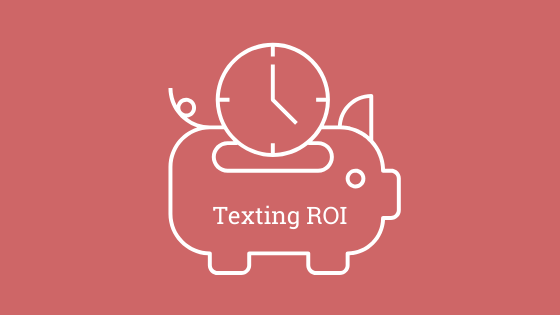
ROI of Text Recruiting Software
Most of the employers we talk to know that text recruiting software is a ‘must have’ for modern talent acquisition teams. But, many are not sure how to think about the return on investment on the purchase of an enterprise grade texting platform. This post provides a framework for thinking about the ROI of text recruiting that should be useful for talent acquisition leadership and frontline recruiters alike.
The starting point is to acknowledge that recruiters spend a huge amount of their time communicating with candidates. Whether it’s scheduling interviews, screening or digging into the details of each candidate’s work experience, most recruiters live on the phone and in email.
The problem is that emails and phone calls require lots of time and suffer from declining response rates. In fact, according to Entelo’s latest recruiting automation report, recruiters spend up to 20 hours per week on outreach alone! That’s 50% of the typical work week, often with lots of time in between waiting around for candidates to respond..
Switching to SMS changes the tedious email and phone dynamic instantly. Most candidates prefer texting to email anyway, so response rates are much higher and response times are much lower. According to CTIA/Hubspot, the average response time for a text message is 60X faster than email.
That matches our internal tracking, which shows that response times are typically measured in minutes or hours, not days as with email. Stop and think about that for a moment. What if your recruiters could increase their candidate response times by even half that? What would the direct financial impact be for your organization? How about if they could double response rates (or more) at the same time?
When thinking about using text versus email, consider these numbers:
- Texting open rates are at 95%+ vs. ~20% for email
- 90% of texts are read within 3 minutes vs. 80% of emails that are never read at all
- For more, check out our post on texting statistics for recruiters
Ok, so how do we use the numbers above to estimate the ROI of text recruiting software? For starters, let’s assume that a recruiter is reaching out to 100 candidates. Open a spreadsheet and plug that number in, so you can tweak the estimate however you see fit.
Next, let’s make an assumption about how many of the candidates we reach out to will open the message. To be conservative, we’ll use 20% for email (exactly as above), but we’ll lower the open rate for text/SMS to 80% from 95%. Multiply those numbers by the 100 candidates in the outreach pool and we get 80 opened text messages and 20 opened emails.
Now, let’s plug in a response rate. For email, let’s be generous again and assume 50% of those who opened our email go on to respond (must be a great job!). And, for our text messages we’ll assume that 80% respond. For individual outreach, many estimates put the number higher, but we’ll go lower and assume that the messages aren’t highly personalized.
Once we multiply our opens by our response rate, we get 64 candidate responses from our texting outreach vs. 10 responses from our email efforts. That’s a difference of 6.4X!
If you think that’s too high or too low, just adjust the assumption in your spreadsheet. For example, if you think that the texting response rate should be much lower… let’s say 40% instead of 80%, change the numbers and you come out with 32 text responses vs. 10 email responses. That’s still a difference of more than 3X. Even the most pessimistic assumptions about texting produce a multiplier of 2X or more.

So that’s the impact of response times, but let’s take a look at the time savings for the average recruiter too. We based our calculations on an average annual salary of $72,000 so if your numbers are different, just plug them into this formula.
The Entelo study noted above found that recruiters spend about 50% of their time conducting outreach, but we’ll be more conservative and put our estimate at 33%, or 1/3rd. That means that a recruiter working 2,000 hours per year, spends about 660 of those hours on outreach, which translates into 83 workdays and ~$24,000 in cost to the employer.
Now, if we plug in the 6.4X improvement in the effectiveness of outreach, that translates to a savings of 557 hours or 70 workdays in time saved. That’s more than $20,000 in labor savings for each recruiter… time that can be reallocated however the employer sees fit.

Once again, if you think those numbers are too high, then change the assumptions as above. Every plausible scenario yields an extraordinary ROI on the modest investment required to get up and running on a text recruiting platform like Emissary.
We realize texting won’t replace phone and email channels completely, but the above formula does offer a solid baseline to extrapolate ROI numbers for your own organization. The bottom line is that texting saves your team valuable hours throughout your recruiting process.
Texting is convenient and fast. It cuts through the noise and gets your recruiters into active dialog with the candidates you need to hire. When it comes to your return on investment, text recruiting software delivers more than almost any other technology investment you can make..
Click here to schedule a demo of Emissary’s Text Recruiting Platform and experience the efficiency of text recruiting for yourself.


